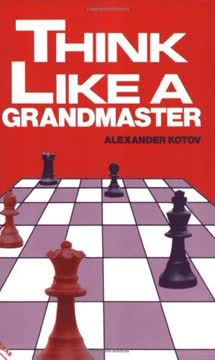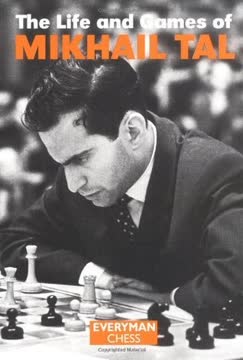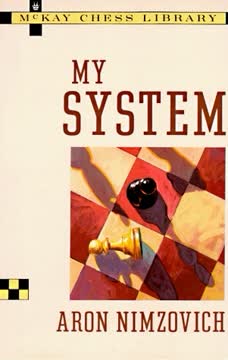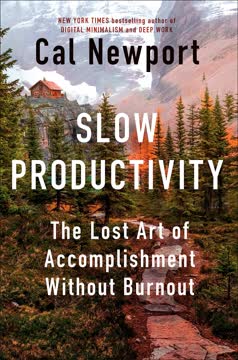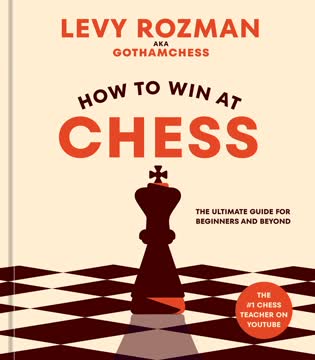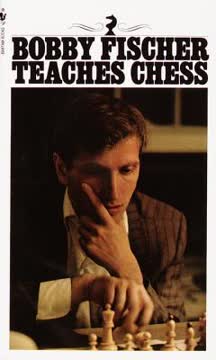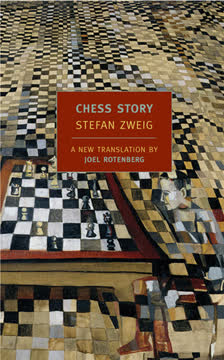Key Takeaways
1. Mastering Analysis: The Grandmaster's Edge
Three factors guarantee finding the right move. They are: an accurate analysis of ail variations that can be logically considered, confidence that you have taken account of ail the best moves and strict economy in thinking time.
Systematic Thinking. Accurate analysis is the cornerstone of a grandmaster's game. It's not just about seeing a few moves ahead, but about systematically exploring all logical possibilities, much like a computer but with intuition. This involves creating a "tree of analysis," where each branch represents a possible move and its consequences.
Avoiding Pitfalls. A common mistake is to jump between variations without fully exploring each one. Grandmasters advocate examining each branch of the tree only once to avoid wasting time and creating confusion. This requires disciplined thinking and confidence in one's analytical abilities.
Balancing Depth and Breadth. The key is to find the golden mean, analyzing enough variations to understand the position without getting bogged down in endless possibilities. This requires developing intuition and the ability to quickly identify the most promising lines. Speed of analysis is also crucial, especially in time-pressured situations.
2. Positional Judgment: Seeing Beyond the Immediate
Here the main role is played by the knowledge, experience and erudition of the grandmaster.
Beyond Calculation. Positional judgment involves assessing the long-term strategic factors in a position, such as pawn structure, piece activity, and control of key squares. It's about understanding the underlying forces at play, not just calculating immediate tactical possibilities. This skill is honed through experience and a deep understanding of chess principles.
Elements of Assessment. Grandmasters break down a position into its constituent elements: open lines and diagonals, pawn structure and weak squares, piece placement, and control of space and the center. Each element is carefully evaluated to determine its impact on the overall position.
Dynamic Evaluation. Modern chess emphasizes a dynamic approach to positional judgment, recognizing that static advantages can quickly become liabilities if not properly exploited. This involves considering the potential for future activity and the ability to adapt to changing circumstances.
3. Strategic Planning: The Blueprint for Success
The direction of a player’s thoughts is governed principally by the features of a given position, but no small part belongs to the character of the player.
Formulating a Plan. A strategic plan provides a roadmap for achieving long-term goals in a chess game. It involves identifying key objectives, such as exploiting a weakness, controlling a key area of the board, or launching an attack. The plan should be flexible and adaptable to changing circumstances.
Balancing General and Concrete. Strategic planning involves both general principles and concrete analysis. Grandmasters use their knowledge of chess principles to guide their overall strategy, but they also carefully analyze specific variations to ensure that their plan is sound.
Adapting to the Opponent. A successful plan must take into account the opponent's strengths and weaknesses, as well as their likely responses. This requires understanding their playing style and anticipating their moves. Flexibility is key, as the plan may need to be adjusted based on the opponent's actions.
4. Endgame Excellence: Converting Advantages into Wins
The main point, however, was that his kingside pieces which I had thought gave die impression of awkwardness and lack of co-operation were working together very well, whereas my ‘nicelyplaced’ pieces were unable toparry his nasty threats.
Technical Precision. The endgame is where advantages are converted into wins. It requires a deep understanding of pawn structures, piece activity, and king safety. Grandmasters possess a vast repertoire of endgame knowledge, allowing them to navigate complex positions with precision.
Schematic Thinking. Endgame play often involves thinking in terms of schemes rather than specific moves. This involves visualizing the ideal arrangement of pieces and pawns and then working towards that goal. Patience and a lack of undue haste are crucial.
King Activity. The king, often a defensive piece in the middlegame, becomes a powerful attacking force in the endgame. Bringing the king to the center of the board and actively involving it in the play is a key principle of endgame technique.
5. The Grandmaster's Knowledge: A Foundation for Mastery
A grandmaster must be able to assess a position accurately and correctly.
Erudition and Experience. A grandmaster's strength lies not only in analytical ability but also in a vast store of chess knowledge. This includes familiarity with opening theory, typical middlegame positions, and endgame principles. The more a player knows and remembers, the easier it is to find precedents and make informed decisions.
Continuous Learning. Chess is a constantly evolving game, and grandmasters must be committed to continuous learning. This involves studying new openings, analyzing recent games, and staying abreast of the latest theoretical developments.
Self-Assessment. Regular self-examination is crucial for identifying weaknesses and improving one's game. This involves analyzing past games, summarizing lessons learned, and seeking feedback from other players.
6. Opening Principles: Laying the Groundwork
He must be well up in modem opening theory.
Strategic Foundation. The opening is the foundation upon which the entire game is built. A solid opening provides a good pawn structure, active piece placement, and control of key squares. Grandmasters possess a deep understanding of opening theory, allowing them to choose lines that suit their style and strategic goals.
Dynamic Understanding. Modern opening theory emphasizes a dynamic approach, recognizing that static advantages can quickly become liabilities if not properly exploited. This involves understanding the underlying strategic ideas and being prepared to adapt to changing circumstances.
Individual Repertoire. Grandmasters typically develop a limited repertoire of openings that they know intimately. This allows them to focus their study and develop a deep understanding of the resulting positions.
7. Middlegame Mastery: Navigating Complexity
No less important is the ability to bit upon the right plan, which must meet the demands of the given position.
Tactical Acumen. The middlegame is where tactical skill and strategic understanding combine. Grandmasters possess a keen eye for tactical opportunities, such as combinations, sacrifices, and forks. They are able to calculate variations accurately and quickly, allowing them to exploit even the smallest advantage.
Strategic Vision. The middlegame also requires a strong strategic vision. Grandmasters are able to assess the long-term implications of their moves and develop plans that exploit weaknesses in the opponent's position. This involves understanding pawn structures, piece activity, and control of key squares.
Adaptability. The middlegame is a dynamic phase of the game, and grandmasters must be able to adapt to changing circumstances. This involves being flexible in their planning and being prepared to change course if necessary.
8. Practical Advice: Avoiding Pitfalls and Maximizing Efficiency
A grandmaster must be able to calculate accurately and quickly ail the significant variations that might practice, analysis and personal efarise in the subsequent course of play.
Time Management. Efficient time management is crucial for success in tournament chess. Grandmasters are able to allocate their time wisely, spending more time on critical positions and less time on routine moves. This involves developing intuition and the ability to quickly assess the complexity of a position.
Avoiding Blunders. Blunders can be devastating, especially in high-level chess. Grandmasters develop strategies for minimizing the risk of blunders, such as double-checking their moves and avoiding overconfidence.
Psychological Warfare. Chess is not just a game of logic; it's also a battle of wills. Grandmasters are skilled at psychological warfare, using their demeanor and playing style to influence their opponents. This involves understanding their opponent's psychology and exploiting their weaknesses.
Last updated:
FAQ
1. What is "Think Like A Grandmaster" by Alexander Kotov about?
- Chess Thought Process: The book explores the mental processes and methods used by top chess grandmasters to analyze positions, make decisions, and plan during games.
- Practical Training Manual: It serves as a practical guide for players aiming to improve their analytical skills, positional judgment, and overall chess understanding.
- Personal and Soviet Experience: Kotov shares insights from his own journey to grandmaster, as well as methods and advice from leading Soviet players like Botvinnik, Tal, and Smyslov.
- Systematic Approach: The book introduces structured techniques for analyzing variations, selecting candidate moves, and forming effective plans in chess.
2. Why should I read "Think Like A Grandmaster" by Alexander Kotov?
- Improve Analytical Skills: The book provides concrete methods to analyze chess positions more deeply and accurately, a skill essential for advancing in chess.
- Learn from Grandmasters: Kotov distills the thinking habits and training routines of world-class players, offering readers a chance to emulate proven approaches.
- Avoid Common Pitfalls: It addresses psychological errors, time trouble, and blunders, helping readers recognize and overcome these issues in their own play.
- Structured Self-Improvement: The book offers practical exercises and self-training techniques, making it a valuable resource for players seeking systematic improvement.
3. What are the key takeaways from "Think Like A Grandmaster"?
- Tree of Analysis: Kotov introduces the concept of the "tree of analysis," emphasizing disciplined, systematic calculation of variations without unnecessary repetition.
- Candidate Moves: The importance of identifying and evaluating all reasonable candidate moves before deep analysis is stressed as a hallmark of strong play.
- Positional Judgment: The book teaches how to break down positions into elements (open lines, pawn structure, piece activity, space, and center) and synthesize them for accurate assessment.
- Planning and Flexibility: Kotov explains how to form and adapt plans based on the evolving demands of the position, rather than sticking rigidly to a single idea.
4. How does Kotov’s "tree of analysis" method work, and why is it important?
- Systematic Calculation: The "tree of analysis" is a visual and mental model for calculating chess variations, where each move branches into possible replies, forming a tree-like structure.
- One-Time Branch Analysis: Kotov advises analyzing each branch only once to avoid time-wasting and confusion, building confidence in your calculation.
- Candidate Move Selection: Before calculating, players should list all plausible candidate moves, ensuring no critical options are overlooked.
- Efficiency and Accuracy: This method helps players avoid the common error of jumping back and forth between lines, leading to more efficient and accurate decision-making.
5. What advice does "Think Like A Grandmaster" give on selecting candidate moves?
- Comprehensive Enumeration: Always identify all reasonable candidate moves in a position before starting deep analysis, as missing one can mean missing the best move.
- Balance Quantity and Quality: Avoid both analyzing too many irrelevant moves and too few; focus on moves that fit the position’s demands.
- Opponent’s Candidates: Consider not only your own candidate moves but also your opponent’s, at every stage of the variation.
- Training Intuition: Systematic practice in finding candidate moves develops intuition, making the process faster and more reliable over time.
6. How does Kotov recommend improving analytical ability and calculation skills?
- Self-Training Exercises: Practice analyzing complex positions from master games without moving the pieces, then compare your analysis to published notes.
- Blindfold and Diagram Reading: Solve studies and positions without a board to strengthen visualization and calculation.
- Timed Analysis: Set time limits for analyzing positions to simulate tournament conditions and improve speed.
- Critical Self-Review: After games, review your analysis, identify errors, and work to correct recurring calculation mistakes.
7. What are the main elements of positional judgment in "Think Like A Grandmaster"?
- Open Lines and Diagonals: Control of open files and diagonals is crucial for piece activity and attacking potential.
- Pawn Structure and Weaknesses: Understanding isolated, backward, and passed pawns, as well as weak squares and color complexes, is key to both attack and defense.
- Piece Placement and Coordination: The effectiveness of your pieces depends on their activity, cooperation, and ability to exploit or defend weaknesses.
- Space and Center Control: Gaining space and controlling the center allows for greater maneuverability and restricts the opponent’s options.
8. How does Kotov suggest forming and adapting plans during a chess game?
- Assessment First: Begin by accurately assessing the position’s elements and synthesizing them into a general evaluation.
- Short-Term and Long-Term Plans: Formulate both immediate and overarching plans, adjusting as the position changes.
- Flexibility: Be ready to change your plan if the position or your opponent’s actions demand it; stubbornly sticking to a flawed plan can be disastrous.
- Manoeuvring and Provocation: Use manoeuvring to provoke weaknesses and create new targets for your plan.
9. What psychological pitfalls and errors does Kotov warn about in "Think Like A Grandmaster"?
- Dizziness Due to Success: Overconfidence when winning can lead to careless blunders; vigilance must be maintained until the game is over.
- Conditioned Reflexes: Automatic, habitual moves can be dangerous if not checked against the specifics of the position.
- Blind Spots: Even strong players can overlook simple threats or attacks due to mental fatigue or fixation on certain ideas.
- Time Trouble: Poor time management leads to errors; Kotov stresses the importance of efficient analysis and decision-making under time constraints.
10. What training methods and exercises does Kotov recommend for self-improvement?
- Analyzing Master Games: Study complicated positions from grandmaster games, pausing at critical moments to analyze without notes, then compare with published analysis.
- Solving Studies and Puzzles: Regularly solve tactical and endgame studies, ideally without a board, to sharpen calculation and visualization.
- Blumenfeld’s Rule: Before making a move, write it down and check the position for simple threats or blunders as if you were a beginner.
- Self-Critique and Review: After tournaments, critically review your games, especially losses, to identify and address recurring weaknesses.
11. How does "Think Like A Grandmaster" address the study of openings, middlegames, and endings?
- Focused Opening Repertoire: Kotov recommends specializing in a few openings and knowing them deeply, rather than superficially covering many.
- Key Middlegame Positions: Study typical middlegame structures and plans arising from your chosen openings, learning both attacking and defensive methods.
- Endgame Schemes: Emphasize understanding endgame schemes and principles, such as piece activity, king centralization, and the importance of not rushing.
- Transition Awareness: Always consider how the opening leads to the middlegame and how the middlegame transitions to the endgame.
12. What are the best quotes from "Think Like A Grandmaster" and what do they mean?
- "When analyzing complicated variations, examine each branch of the tree once and once only." – This highlights the importance of disciplined, non-repetitive calculation for efficiency and accuracy.
- "A single plan is the sum total of strategic operations which follow each other in turn and which each carry out an independent idea that arises logically from the demands of a given position." – Kotov emphasizes that planning is a dynamic, evolving process, not a rigid blueprint.
- "Doflot hurry." – Especially in the endgame, patience and careful maneuvering are often more effective than rushing to force events.
- "Train your fantasy." – Creativity and imagination in finding unusual or unexpected moves are skills that can be developed through practice and study.
- "The inability of an experienced master to cope with the clock should be considered as faulty as making an oversight in analysis." – Kotov equates poor time management with analytical errors, stressing its importance in practical play.
Review Summary
Think Like A Grandmaster receives mixed reviews, with an overall positive reception. Many readers praise its insights into a grandmaster's thought process, planning strategies, and time management. The book's advice on calculation methods and chess concepts is highly valued, particularly by developing players. However, some critics find it outdated, rigid in approach, or difficult for beginners to follow. Despite these criticisms, many consider it a foundational text in chess literature, offering valuable lessons applicable beyond the game itself.
Similar Books
Download PDF
Download EPUB
.epub digital book format is ideal for reading ebooks on phones, tablets, and e-readers.
